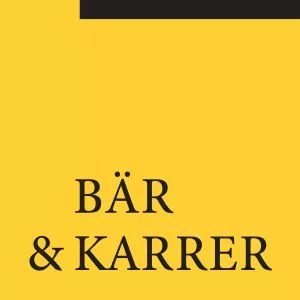1. What are the main causes of action upon which a product liability claim can be brought in your jurisdiction, for example, breach of a statutory regime, breach of contract and/or tort? Please explain whether, for each cause of action, liability for a defective product is fault-based or strict (i.e. if the product is defective, the producer (or another party in the supply chain) is liable even if they were not individually negligent).
Product liability claims may be based on (1) the Swiss Product Liability Act (PLA), (2) contract law, (3) tort law, or (4) statutory provisions applicable to specific industries.
The PLA is inspired by the European Union's Directive 85/374/EEC on product liability. According to the PLA, a manufacturer, importer, or supplier is strictly liable for personal injuries and – to a certain extent – damage to property caused by a product that did not provide the safety that could reasonably be expected. Liability for a defective product is strict (cf. Article 1 et seq. PLA).
Since the PLA is neither a complete nor an exclusive cause of action, an injured person may raise additional claims based on other legal grounds, such as contract law, tort law, or other statutory provisions applicable to specific industries (Article 11(2) PLA).
If a contractual relationship exists between the injured person and the supplier, a defective product can also give rise to a claim for breach of contract. The Swiss Code of Obligations (CO) contains general contractual liability provisions (Article 97 et seq. CO) and special contractual liability provisions, such as for sales contracts (Article 197 et seq. CO). Contractual liability is generally fault-based. In sales contracts and in the event of rescission of the respective contract, the seller could be held strictly liable for direct losses incurred by the buyer as a result of defective goods (Article 208(2) CO).
Finally, tort law provides grounds for fault-based liability claims. Pursuant to the general tort provision of Article 41 CO, a person who unlawfully causes damage to another is obliged to provide compensation. In practice, tort liability is often derived from the special principal's or property owner's liability (Article 55 CO and Article 58 CO). In order to be held liable under tort law, damage must, inter alia, be caused unlawfully, i.e., in violation of absolutely protected legal interests (life, physical integrity, property) or of a statutory obligation, the purpose of which is to prevent damage of the very kind suffered. Hence, the breach of a statutory obligation can impose tort liability if such a statutory obligation was introduced to prevent the damage suffered.
2. What is a 'product' for the purpose of the relevant laws where a cause of action exists? Is 'product' defined in legislation and, if so, does the definition include tangible products only? Is there a distinction between products sold to, or intended to be used by consumers, and those sold for use by businesses?
According to Article 3 PLA, products are any movable things, even if it forms part of another movable or immovable thing, as well as electricity (cf. the comparable legal definition in Article 2(1) Swiss Federal Act on Product Safety).
Whether this definition only encompasses "tangible" in the sense of physical things has not been conclusively clarified by the Swiss Federal Supreme Court (FSC) and remains a contentious issue within academic discourse. Although certain movable items, such as floppy disks and hardware, are indisputably considered products, the Swiss Federal Supreme Court has yet to establish, for example, whether software may be deemed a product under Article 3 PLA. Scholars in the field have diverging opinions, with some maintaining that the potential for embodiment of software is incidental and therefore does not qualify it as a tangible asset or product. Conversely, a more widely held view asserts that the embodiment of software, even if it is only accessible via download, is essential, thus categorising it as a product. Clarifying case law is eagerly awaited.
Although the PLA primarily aims to protect consumers, there is no distinction between whether or not the products are put on the market for use by consumers or by businesses.
3. Who or what entities can bring a claim and for what type(s) of damage? Can a claim be brought on behalf of a deceased person whose death was caused by an allegedly defective product?
Article 1 PLA limits liability for defective products (1) if they cause a person's death or injury (Article 1(1)(a) PLA), or (2) if an item is damaged or destroyed that, by its nature, is usually intended for private use or consumption and has been used by the injured party mainly for private purposes (Article 1(1)(b) PLA). Claims based on the PLA can be brought forward by natural persons or legal entities.
Under Swiss law, the right to assert claims for damages extinguishes upon the death of the injured party. However, the heirs of the deceased person may be able to assert the claim.
4. What remedies are available against a defendant found liable for a defective product? Are there any restrictions on the types of loss or damage that can be claimed?
The PLA provides for compensation for damages leading to death or personal injury, as well as damage to property if the object is, in its nature, normally intended for private use and was mainly used for private purposes by the injured party (Article 1(1) PLA).
The PLA does not provide for compensation for damage to the product itself (Article 1(2) PLA). Furthermore, damage to property is subject to a deductible of CHF 900 (Article 6(1) PLA).
Since the PLA is only a supplemental source for cause of action, claims for damages may be based on other tort or contract law. Additionally, in cases of homicide or personal injury, the court may, depending on the degree of injury and fault of the tortfeasor, award the victim of personal injury or the dependents of the deceased party an appropriate sum by way of satisfaction for pain and suffering (Article 47 CO).
5. When is a product defective? What must be shown in order to prove defect?
According to Article 4 PLA, a product is considered defective if it does not provide the safety that could reasonably be expected considering all circumstances. In particular, the way the product is presented to the public, its use that can reasonably be expected, and the time at which it was placed on the market must be considered.
To successfully seek damages under the PLA, the claimant must provide evidence for the following additional elements:
- Recoverable damage: damage caused by the death of a person or a personal injury (Article 1(1)(a) PLA) as well as damage above CHF 900 to predominantly privately used property (Article 1(1)(b) and Article 6 PLA) constitute recoverable loss. Damage to the defective product itself is not recoverable under the PLA (Article 1(2) PLA);
- Causal link between the defective product and the recoverable damage: the recoverable damage must be caused by the defective product; and
- Defendant must be a producer pursuant to Article 2 PLA (cf. question 8 below).
6. Which party bears the burden of proof? Can it be reversed?
Under Swiss law, the burden of proving the existence of an alleged fact generally rests on the person who derives rights from that fact (Article 8 Swiss Civil Code [CC]). Therefore, in a product liability case, the burden of proof for the elements of product liability generally rests on the claimant.
To make a claim based on the PLA, the claimant has to prove that the product's fault caused the recoverable damage (cf. question 7 above).
The general standard concerning the burden of proof is "full evidence". However, with regard to proving causation, the FSC has lowered the claimant's burden of proof and held that the involvement of a faulty product in an accident is already a significant indicator of the causal link. Furthermore, if causation can only be proven indirectly and through circumstantial evidence, the applicable standard of proof is not "full evidence" but the lower standard of "preponderant probability" (FSC 133 III 81 consid. 4). Nevertheless, a recent judgment by the FSC (4A_635/2020 consid. 3 et seq., 5 May 2021) demonstrates that proving causation is still a high threshold for product liability claims.
7. What factors might the court consider when assessing whether a product is defective? To what extent might the court account for a breach of regulatory duty, such as a breach of a product safety regulation?
The court determines the defectiveness of a product in accordance with Article 4 PLA when it does not provide the safety that could be reasonably expected (cf. question 5 above). In doing so, the court considers, inter alia, the way in which the product was presented to the public, its reasonably anticipated use, and the time when it was put into circulation.
The court will consider any breach of regulatory duty. Especially in cases where the manufacture of products is regulated, any breach of that regulation will lead the court to presume that the product is defective.
8. Who can be held liable for damage caused by a defective product? If there is more than one entity liable, how is liability apportioned?
Pursuant to the PLA, liability sits with the producer of the defective product. The PLA provides for a broad definition of the term "producer". According to Article 2 PLA, producers are:
- The manufacturer of the final product, a part or a component of the product, and the producer of any raw material (manufacturer; Article 2(1)(a) PLA);
- Every person who claims to be the producer by attaching his or her name, trademark, or other distinctive sign on the product (quasimanufacturer; Article 2(1)(b) PLA); and
- Every person who imports a product for sale, rental, leasing, or any other form of commercial distribution into Switzerland (importer; Article 2(1)(c) PLA).
Manufacturer, quasi-manufacturer, and importer are jointly and severally liable (cf. Article 7 PLA). Each supplier is liable as a producer if the manufacturer or the importer are unknown and if the supplier does not reveal their identity within a reasonable timeframe after being requested to do so by the injured party (Article 2(2) PLA or if the identity of the importer is unknown (Article 2(3) PLA).
9. What defences are available?
According to Article 5(1) PLA, the producer is not liable if it can prove that:
- The producer did not put the product on the market;
- It can be assumed from the circumstances that the defect causing the damage was not present at the time the product was put on the market;
- The producer neither manufactured the product for sale or any other form of economically motivated purpose nor manufactured or distributed it in the course of commercial activity;
- The defect is due to the fact that the product complies with binding statutory requirements; or
- The defect could not be detected according to the state of the art in science and technology prevalent at the time when the product was put on the market.
Moreover, the producer of a raw material or a partial product is not liable if it can prove that the defect was caused either by the design of the product into which the raw material or partial product was incorporated or by the instruction of the manufacturer of that product (Article 5(2) PLA).
Apart from defects owing to compliance with the binding statutory requirements, there is no "regulatory compliance defence" in civil law. In administrative proceedings, however, compliance with technical standards stipulates a presumption that the product complies with the essential health and safety requirements.
10. What is the relevant limitation period(s) for bringing a claim? Does a different limitation period apply to claims brought on behalf of deceased persons?
A claim based on the PLA must be brought within three years from the date the injured party became aware or reasonably should have become aware of the loss, the fault of the product, and the identity of the producer (relative statute of limitation, Article 9 PLA). In any case, the claim must be brought within 10 years after the producer put the product that caused the loss on the market (absolute statute of limitation, Article 10 PLA).
The limitation period according to Article 10 PLA is only interrupted by filing a claim against the manufacturer.
In cases of death or personal injury, the statute of limitations for product liability claims is three years from the day the injured person became aware of the damage and the liable manufacturer and 20 years from the day on which the damaging behaviour took place or ceased (cf. Article 60(1bis) CO).
11. To what extent can liability be excluded, if at all?
Liability based on the PLA cannot be contractually excluded (Article 8 PLA).
12. Are there any limitations on the territorial scope of claims brought under a strict liability statutory regime?
Generally, a claim can be brought before Swiss courts if the defendant resides in Switzerland, regardless of where the claimant resides.
In cases of international factual background, a Swiss court will assess its jurisdiction according to the Lugano Convention (in connection with parties domiciled in contracting states of the Lugano Convention) or the Private International Law Act (PILA; in connection with parties without domicile in contracting states of the Lugano Convention).
In practice, the place where the unlawful act was committed or had its effects (cf. Article 5(3) Lugano Convention and Article 129(1) PILA) will be relevant for establishing jurisdiction in Switzerland.
In an international context, claims based on a defect or defective description of a product are governed at the option of the injured party: (a) by the law of the state in which the tortfeasor has their establishment or, in the absence of such establishment, their habitual residence; or (b) by the law of the state in which the product was acquired, unless the tortfeasor proves that the product was introduced in the market of that state without their consent (Article 135(1) PILA).
13. What does a claimant need to prove to successfully bring a claim in negligence?
Pursuant to Article 41 CO, a person is liable for unlawfully causing damage to another person. To succeed in a claim based on Article 41 CO, the claimant must prove the following:
- Damage: The damage corresponds to an unintentional reduction in assets, i.e., a reduction in assets, an increase in liabilities, or a loss of profit. According to the difference theory, the damage corresponds to the difference between the current state of assets and the state that the assets would have had without the damaging event;
- Unlawful act: pursuant to Swiss law, an act is unlawful if it harms the property or the personal integrity of a person. An act that only harms the assets of a person is only unlawful if a law aimed at the protection of such assets is violated;
- . Causal link between unlawful act and damage: the claimant must prove as a matter of fact that without the unlawful act, the damage would not have been caused (natural causation). Based on this, the court must then conclude as a matter of law that, in light of the general experience, the unlawful act at issue is generally of a nature to cause the damage at issue (adequate causation); and
- . Fault on behalf of the defendant: the claimant must prove that defendant caused the damage intentionally or negligently. Negligence is deemed to have occurred if a reasonable person could have foreseen the occurrence of the damage.
In practice, tort liability is often derived from the principal's liability (Article 55 CO). According to this specific provision, the principal – usually an employer – is liable for the unlawful loss caused by its employees or ancillary staff in the performance of their work. An exemption from liability for the principal is only possible if it can prove that due care was taken to avoid any loss. In practice, however, the FSC has set the bar for such defenses extremely high. As a result, the principal's liability amounts to that of strict liability.
14. In what circumstances might a claimant bring a claim in negligence?
See question 13: A claim can be brought forward based on Article 41 CO also in cases of negligence.
15. What remedies are available? Are punitive damages available?
Generally, tort law provides for monetary compensation for losses caused by faulty or defective products (cf. question 13 above). Reimbursable are medical costs, financial disadvantages resulting from incapacity for work, reduction in pension, nursing and care costs, and household damage.
In addition, in cases of homicide or personal injury, the court may, depending on the degree of the injury and the degree of fault of the tortfeasor, award the victim of personal injury or the dependents of the deceased an appropriate sum by way of compensation for pain and suffering (Article 47 CO).
Punitive damages are not available under Swiss law. Swiss courts refuse to award punitive damages even if the applicable foreign law provides for such damages (Article 135(2) PILA).
16. If there are multiple tortfeasors, how is liability apportioned? Can a claimant bring contribution proceedings?
Where two or more persons are subject to tort-based claims, they are jointly and severally liable to the person suffering damage (Article 50(1) CO). The court determines at its discretion whether and to what extent they have a right of recourse against each other (Article 50(2) CO). Additionally, if two or more persons are liable for the same damage on different legal grounds, primarily the person having caused the damage in tort shall be held liable, and lastly that person who is deemed liable by statutory provision without being at fault or in breach of contractual obligation (Article 51(2) CO).
17. Are there any defences available?
First and foremost, the defendant could dispute the general liability requirements (cf. question 13). Furthermore, Swiss law provides for several special defences available to a product liability claim based on tort law: Where (1) the person suffering damage, consented to the harmful act; (2) the circumstances attributable to the person suffering damage contributed to the occurrence of the damage; or (3) the person suffering the loss violated their duty to mitigate their loss, the court may reduce or even forego compensation (Article 44(1) CO). Further, the defendant is not liable if they can prove that they acted in self-defence (Article 52(1) CO). Finally, the awarded damages can be reduced if the defendant's damage to the property of another was necessary to protect themselves or another person against imminent damage or danger (Article 52(2) CO).
To view the full article, click here.
Originally published by The Legal 500
The content of this article is intended to provide a general guide to the subject matter. Specialist advice should be sought about your specific circumstances.



